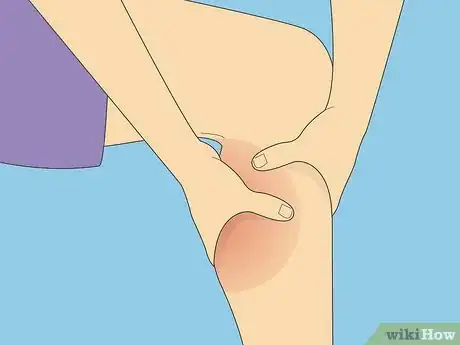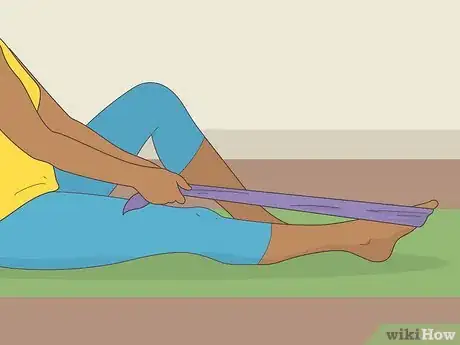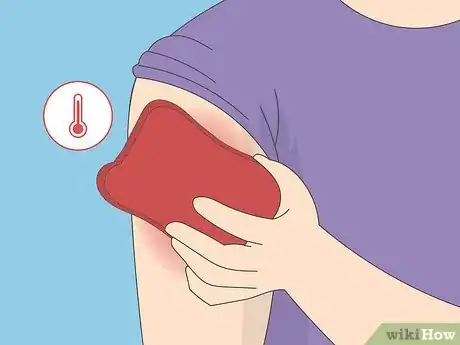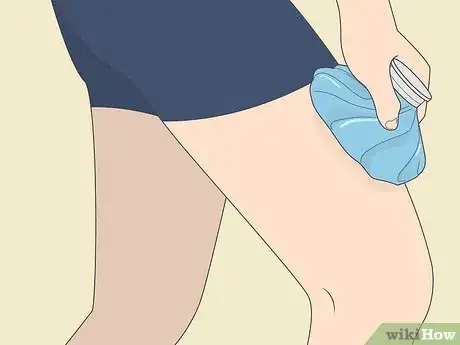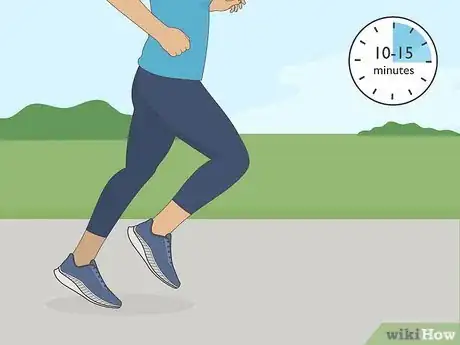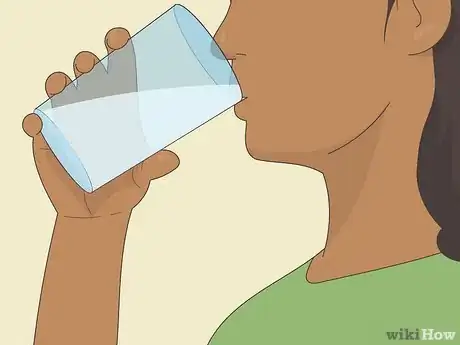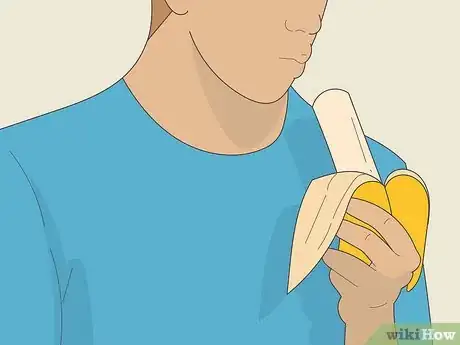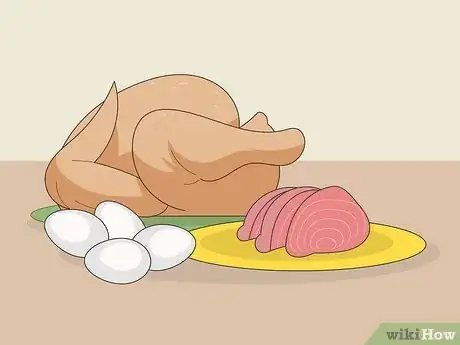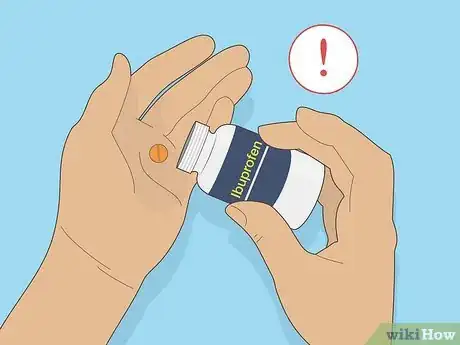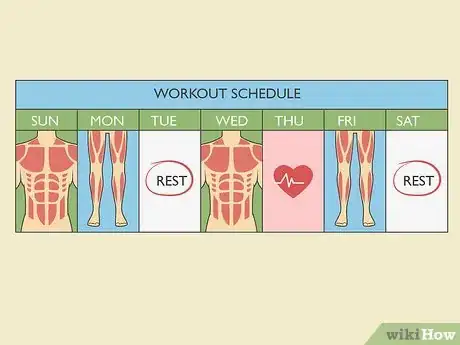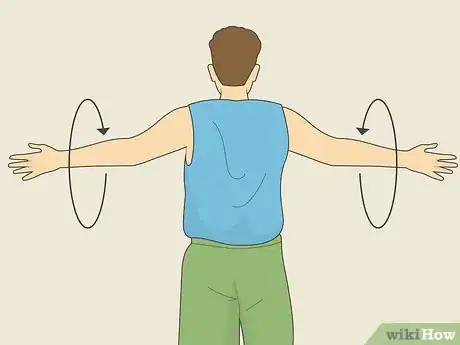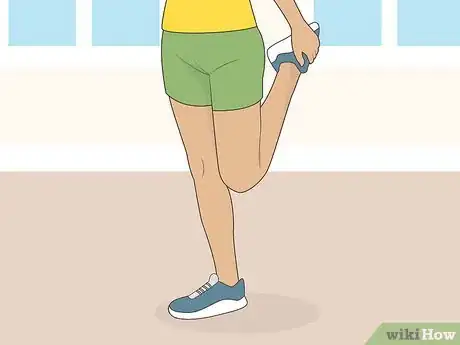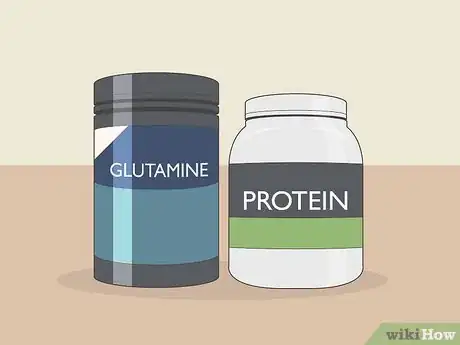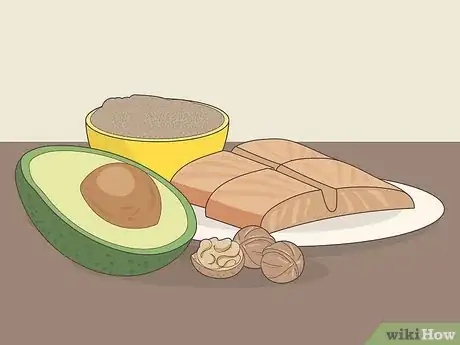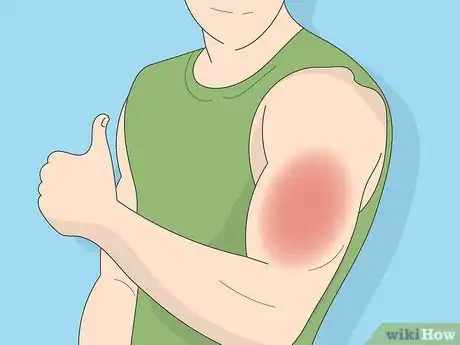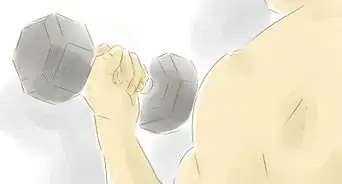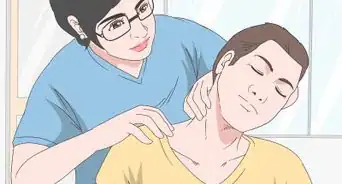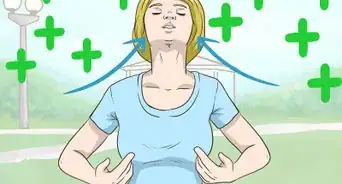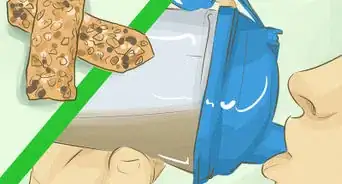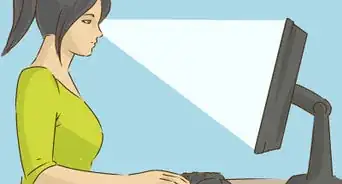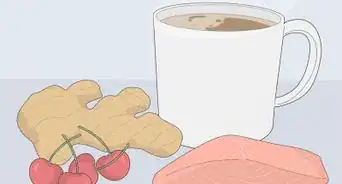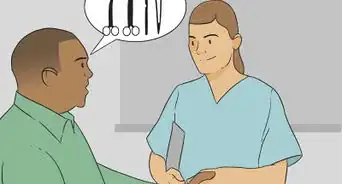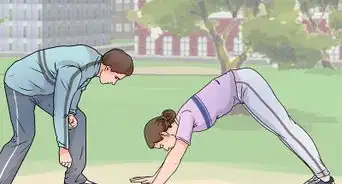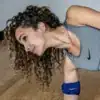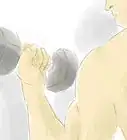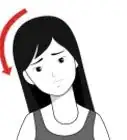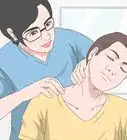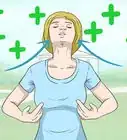This article was co-authored by Shira Tsvi. Shira Tsvi is a Personal Trainer and Fitness Instructor with over 7 years of personal training experience and over 2 years leading a group training department. Shira is certified by the National College of Exercise Professionals and the Orde Wingate Institute for Physical Education and Sports in Israel. Her practice is based in the San Francisco Bay Area.
There are 7 references cited in this article, which can be found at the bottom of the page.
This article has been viewed 36,726 times.
Sore muscles are caused by injury and inflammation, often from exercise or trauma. Lactic acid can also cause soreness, which is often caused by exercise. While muscle soreness is often inevitable after a tough workout, there are some ways to manage the pain and get back to your normal self.
Here are 15 tips to help you get started.
Steps
Expert Q&A
-
QuestionWhat helps sore muscles naturally?
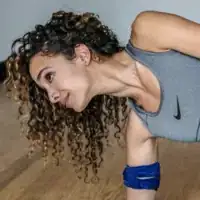 Shira TsviShira Tsvi is a Personal Trainer and Fitness Instructor with over 7 years of personal training experience and over 2 years leading a group training department. Shira is certified by the National College of Exercise Professionals and the Orde Wingate Institute for Physical Education and Sports in Israel. Her practice is based in the San Francisco Bay Area.
Shira TsviShira Tsvi is a Personal Trainer and Fitness Instructor with over 7 years of personal training experience and over 2 years leading a group training department. Shira is certified by the National College of Exercise Professionals and the Orde Wingate Institute for Physical Education and Sports in Israel. Her practice is based in the San Francisco Bay Area.
Personal Trainer & Fitness Instructor You can follow the RICE method for treating sore muscles—rest, ice, compress, and elevate your muscles.
You can follow the RICE method for treating sore muscles—rest, ice, compress, and elevate your muscles. -
QuestionWhat are some good ways to exercise if I am recovering from sore muscles?
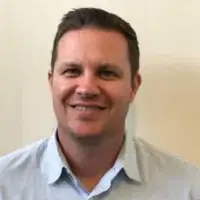 Scott Anderson, MA, ATC, SFMA, DNSPScott Anderson is the Chief Clinical Officer at SyncThink, an award winning startup founded out of Stanford University. Scott previously served as the Director of Sports Medicine/Athletic Training for Stanford University for over ten years from 2007 to 2017. Scott has over 18 years of clinical and management experience, and is a recognized international speaker on topics of clinical specialization, which include developmental kinesiology, neuroscience/concussion, and movement dysfunction. He is a certified Dynamic Neuromuscular Stabilization Practitioner (DNSP), Sports Safety Specialist and is certified to conduct Selective Functional Movement Assessments (SFMA), and Functional Movement Screenings (FMS). He earned a BS in Athletic Training from Washington State University in 2000 and an MA in Athletic Administration from Saint Mary's College in 2002.
Scott Anderson, MA, ATC, SFMA, DNSPScott Anderson is the Chief Clinical Officer at SyncThink, an award winning startup founded out of Stanford University. Scott previously served as the Director of Sports Medicine/Athletic Training for Stanford University for over ten years from 2007 to 2017. Scott has over 18 years of clinical and management experience, and is a recognized international speaker on topics of clinical specialization, which include developmental kinesiology, neuroscience/concussion, and movement dysfunction. He is a certified Dynamic Neuromuscular Stabilization Practitioner (DNSP), Sports Safety Specialist and is certified to conduct Selective Functional Movement Assessments (SFMA), and Functional Movement Screenings (FMS). He earned a BS in Athletic Training from Washington State University in 2000 and an MA in Athletic Administration from Saint Mary's College in 2002.
Sports Medicine & Injury Prevention Specialist Pilates and yoga can help facilitate recovery and create a relaxed physiology.
Pilates and yoga can help facilitate recovery and create a relaxed physiology.
Warnings
- If you do massage the muscle, don't do it too hard.⧼thumbs_response⧽
- Take care when using heating pads as they can burn you.⧼thumbs_response⧽
Things You'll Need
- Heating Pad
References
- ↑ http://www.webmd.com/fitness-exercise/sore-muscles-dont-stop-exercising?page=2
- ↑ http://www.webmd.com/fitness-exercise/art-sore-muscles-joint-pain?page=2
- ↑ http://www.active.com/fitness/articles/7-ways-to-relieve-muscle-soreness
- ↑ http://www.active.com/fitness/articles/7-ways-to-relieve-muscle-soreness
- ↑ http://www.ncbi.nlm.nih.gov/pmc/articles/PMC1150229/
- ↑ http://www.webmd.com/fitness-exercise/art-sore-muscles-joint-pain?page=2
- ↑ http://www.beachbody.com/beachbodyblog/fitness/recovery-done-right-8-ways-prevent-muscle-soreness
- ↑ http://www.bodybuilding.com/fun/topicoftheweek158.htm
- ↑ http://www.beachbody.com/beachbodyblog/fitness/recovery-done-right-8-ways-prevent-muscle-soreness
